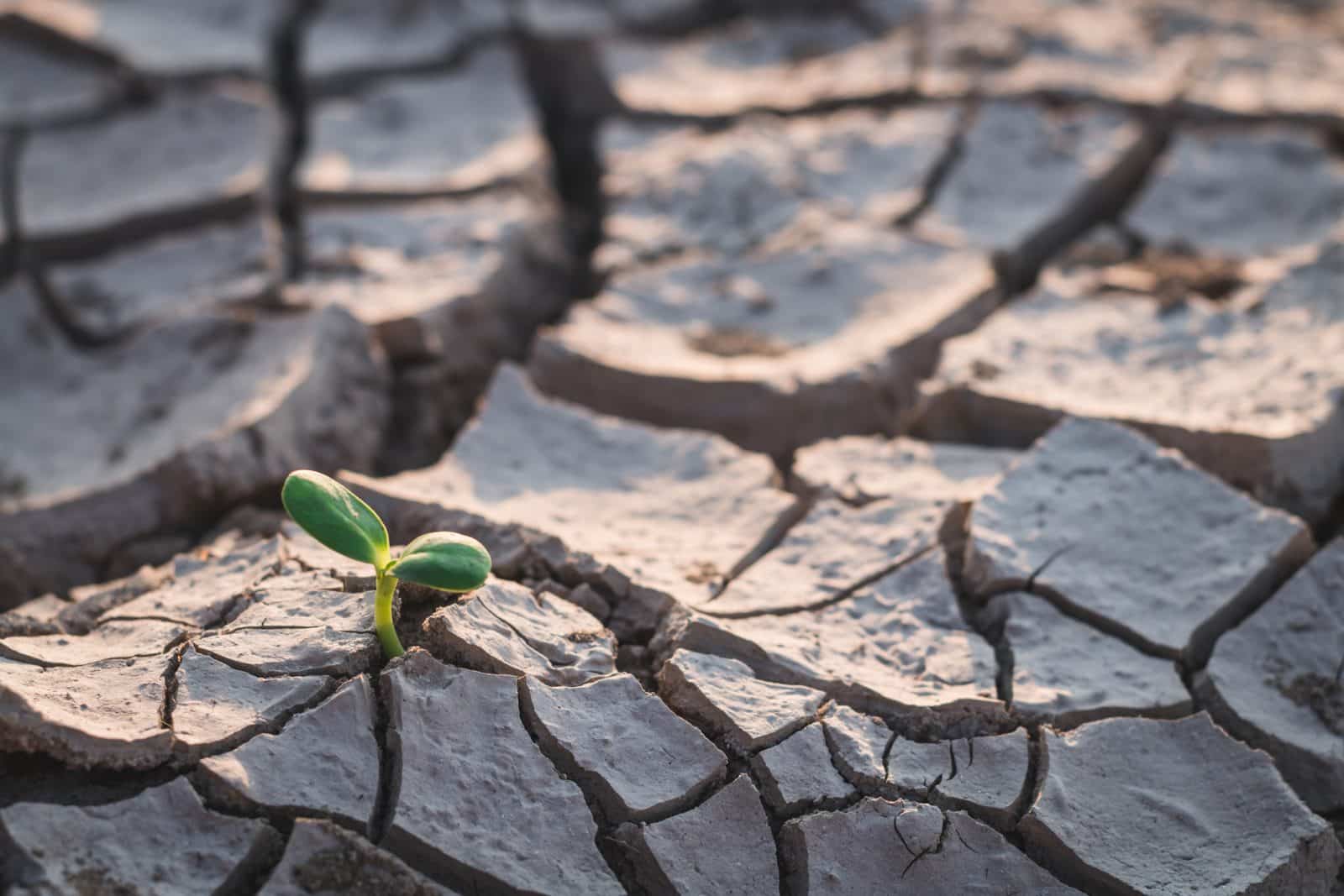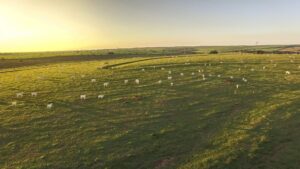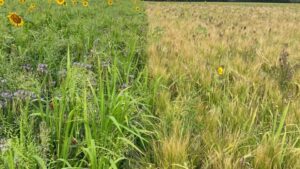How can seed companies help farmers and ranchers shift their acres to forages most suitable to the changing climate?
Cool-season grasses thrive in the spring and fall when soil temperatures range from 50-65 degrees Fahrenheit with an air temperature between 60-75, and warm-season grasses thrive in the summer months when soil temperatures are between 70-90 degrees Fahrenheit with an air temperature of 80-95 degrees.
While cool-season grasses grow best in northern areas and warm-season grasses thrive in southern regions, the zones for what’s acceptable where are changing.
In 2013, U.S. Department of Agriculture’s (USDA) climate data led experts to anticipate “an increase in areas experiencing droughts and the occurrence of more intense precipitation events.”
Since then, the Midwest has been afflicted with extreme heat, heavy downpours and flooding. The Midwest is defined as Minnesota, Wisconsin, Michigan, Iowa, Missouri, Illinois, Indiana and Ohio. All of Missouri, the southern part of Iowa, and most of Illinois, Indiana and Ohio are in what’s called the Transition Zone.
The frequency in the number of days above 95 degrees is projected to increase by mid-century, as well as the average temperature, the frost-free season and cooling degree days, according to data from the U.S. Global Change Research Project. Regardless of whether someone is in the “Transition Zone,” farmers must adapt to these transitions.
In Missouri, about 25 percent of the state’s 28.2 million farmland acres is in pasture, according to the 2012 Census of Agriculture. As of Sept. 6, most of the state was in moderate to severe drought with a handful of counties in extreme drought, according to the U.S. Drought Monitor. Furthermore, only 20 percent of the pasture was rated good and excellent, meaning 80 percent was less than desirable, according to USDA’s September Crop Progress and Quality report.
Farmers with cool-season grasses realize there’s a production slump in the months of July and August and need to fill the gap. This has some looking to make changes to their pasture management strategies.
J.D. McKee is one Missouri farmer who has made the switch from Bermudagrass to warm-season big bluestem grass. Since doing so, he’s become an ambassador for warm-season grasses as growing conditions have become hotter and drier.
McKee converted 13 acres into native big bluestem in 2016. He applied lime and fertilizer based on soil tests and planted 18-20 pounds of seed per acre in early June of that year. Other than weed control, he left the acres untouched to let the root system establish. In 2017, McKee converted another 21 acres. In the future, he hopes to drill in April to get ahead of the crabgrass.
In May 2017, he fertilized the bluestem and Bermuda fields again based on soil tests results. He cut and baled the hay from both fields in the third week of June.
McKee says his investment paid off, adding that his calves fed bluestem hay weighed 50 pounds more than calves fed on another part of his cow-calf operation. He hopes to put 40 percent of his farm into warm-season grasses.
Missouri’s Natural Resources Conservation Service reports that adding native warm-season grasses to pasture systems has resulted in increased gains on yearling cattle and improved performance of cow-calf herds during the summer when cool-season grasses stop growing.
But switching from cool-season grasses to warm-season is not without its challenges. Rusty Lee, a University of Missouri Extension agronomy specialist in Montgomery County, shares some common questions you can expect from growers.
1. How long will my land be out of production?
2. What varieties should I plant?
3. Do I need to change my soil fertility strategy?
Lee says if you can provide answers to these three questions, you’ll be well positioned.
First, Lee says, growers should plan for their land to be out of production for at least one year, and maybe even two.
There are two schools of thought for management strategies in making the change, Lee explains. In the first strategy, it’s a spray-smother-spray routine where an entire year would be spent eradicating the cool-season grasses. Fescue is a very hardy plant, he says, and it drops lots of seed in the soil. For this strategy, a grower would spray the cool-season grass in the spring, and then go in and plant an annual crop, such as soybeans, to smother out any remaining grass. This would be followed by a fall spray, and then a winter planting of dormant warm-season grass seed.
“Or a grower can plant an annual cover crop that could give some grazing potential so an entire year is not knocked out,” Lee says. “There’s an opportunity for seed companies to help growers get something in the soil.”
The second school of thought, he says, is that after the spraying in the spring, to select varieties that are imazapic tolerant and drill in the spring, as well.
Lee says this is less common, but he’s seen one field where this was done and was quite impressed.
“I’m attempting to do that this coming spring (2019) to see how it works first-hand,” he says. “Theoretically, a grower could start light grazing in year two and be full in on year three.”
In Missouri, the most common warm-season grasses for forage production is Indian grass and bluestem, both big and little. Lee says he’s also seeing growers add forbs, switchgrass and cool-season rye to their mix — anything they can do to maximize their grazing system.
“It’s all about how growers intend to manage their operation,” Lee says. For instance, if you stay on top of it, switchgrass can be a really good forage for cattle. But you can’t let it mature; that’s when it’s better suited for biofuels.
The other piece of the puzzle is soil fertility. Unlike cool-season grasses, Lee says growers should not apply nitrogen during the establishment period.
“If there’s any cool-season grass left in the soil bed, you’ll stimulate their growth and not that of the warm-season grasses,” Lee adds. “But you need to get your potassium and phosphorus right.”
Lee recognizes that it’s hard for growers to justify tying up their land for such a long period of time, not to mention the cost of seed and other inputs. He recommends growers start with just a few acres or one pasture. This way, they can see if they like it and get a feel for how it differs from the cool-season grasses.
Lee said many producers know they need to be doing something different but aren’t sure they’re ready to make the leap.
“There’s need to be patience and education,” Lee says. “Seed companies can help by ramping up education efforts around best management practices for dormant seeding and handling pure live seed.
“It’s really a different mentality. These grasses are slow to establish and slow-growing but once they’re up, many have found they’re worth the investment.”













